
Stories about Navajo Four Seasons, Native American Cradleboards, Pia Toya Story, Parent Committee Special Projects, and Powwow Dancing.
- Subject:
- Arts and Humanities
- Dance
- Literature
- Date Added:
- 03/16/2021

Stories about Navajo Four Seasons, Native American Cradleboards, Pia Toya Story, Parent Committee Special Projects, and Powwow Dancing.

This Goshute alphabet (ABC) coloring book is a part of the Native American Indian Literacy Project storybook series for the six main Utah Tribal Nations. There are five stories per Tribe, with a total of 30 booklets, plus an ABC book. The set of Indian Tribal stories may be utilized by elementary classroom teachers to (1) develop an understanding and appreciation of Native American culture and societal contributions (2) provide a genre of text for the application of reading strategies, and (3) facilitate the mastery of various Utah Core Content Curriculum objectives. The Native American Indian Literacy Project was made possible by funds from the Utah State Office of Education (USOE). It is a joint effort of the USOE and San Juan School District Media Center.
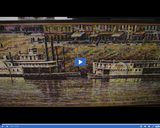
College sweethearts John and Marcia Koverman are passionate about the arts.
Learn how veterans, their loved ones, and volunteers create art out of military uniforms
through a lengthy but therapeutic process made possible by Combat Paper Nevada.
Wildwood School located in Schenectady, New York, provides education for students
with complex learning disabilities. Lastly, we go to Utah where Repertory Dance Theatre
inspires and encourages students to learn about the benefits and history of dance.

To the Ute people, the bear, quee yahgudt, is a sacred animal. He gave the Ute people their Bear Dance, which is held in the springtime after the first thunder. This Ute (Uintah/Ouray) booklet is part of the Native American Indian Literacy Project storybook series for the six main Utah Tribal Nations. The project was led by Shirlee A. Silversmith, American Indian education specialist for the Utah State Office of Education. There are five stories per Tribe, with a total of 30 booklets, plus an ABC book. The set of Indian Tribal stories may be utilized by elementary classroom teachers to (1) develop an understanding and appreciation of Native American culture and societal contributions (2) provide a genre of text for the application of reading strategies, and (3) facilitate the mastery of various Utah Core Content Curriculum objectives. The Native American Indian Literacy Project was made possible by funds from the Utah State Office of Education (USOE). It is a joint effort of the USOE and San Juan School District Media Center.
The original set has 30 booklets, measuring 5.5” x 8.5” each, and illustrated by tribal members. The booklets were formatted to be printed and assembled. This version of the book has been updated to accommodate using a projector or smart board with pages appearing in order.
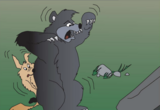
According to Shoshone tradition, Coyote tales should only be told during the winter time. The People of the Big Shield are a warrior society of the Shoshone tribe who are known for their big shields and fearless nature. Beads and ornamentation on Shoshone regalia are placed, not as decoration, but as powerful objects to fend off evil and the enemy. Feathers are earned for great courage and are worn on the upper arm of the warrior. Many warriors decorate the armband with beads on which eagle feathers dangle. This Shoshone story booklet is part of the Native American Indian Literacy Project storybook series for the six main Utah Tribal Nations. The project was led by Shirlee A. Silversmith, American Indian education specialist for the Utah State Office of Education. There are five stories per Tribe, with a total of 30 booklets, plus an ABC book. The set of Indian Tribal stories may be utilized by elementary classroom teachers to (1) develop an understanding and appreciation of Native American culture and societal contributions (2) provide a genre of text for the application of reading strategies, and (3) facilitate the mastery of various Utah Core Content Curriculum objectives. The Native American Indian Literacy Project was made possible by funds from the Utah State Office of Education (USOE). It is a joint effort of the USOE and San Juan School District Media Center.
The original set has 30 booklets, measuring 5.5” x 8.5” each, and illustrated by tribal members. The booklets were formatted to be printed and assembled. This version of the book has been updated to accommodate using a projector or smart board with pages appearing in order.
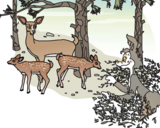
According to Navajo tradition, this is a winter tale. Coyote stories should only be told in the winter time. This Navajo story booklet is part of the Native American Indian Literacy Project storybook series for the six main Utah Tribal Nations. The project was led by Shirlee A. Silversmith, American Indian education specialist for the Utah State Office of Education. There are five stories per Tribe, with a total of 30 booklets, plus an ABC book. The set of Indian Tribal stories may be utilized by elementary classroom teachers to (1) develop an understanding and appreciation of Native American culture and societal contributions (2) provide a genre of text for the application of reading strategies, and (3) facilitate the mastery of various Utah Core Content Curriculum objectives. The Native American Indian Literacy Project was made possible by funds from the Utah State Office of Education (USOE). It is a joint effort of the USOE and San Juan School District Media Center.
The full set has 30 booklets, measuring 5.5” x 8.5” each, and illustrated by tribal members. The booklets were formatted to be printed and assembled. This means that they do not read well when using a projector or smart board because the pages will appear out of order. If a teacher did want to use the books in an electronic format, they would be best off screenshotting the pages and arranging them in a slide presentation.

In this step-by-step tutorial, instructor Val shows you how to embed Google Docs into Canvas. Then, she shares some tips to help you ensure your students get the best experience navigating embedded content in Canvas.
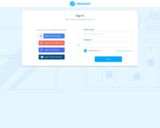
This is a Nearpod that covers elements and characteristics of good citizenship. It has activities that push students to think deeper about citizenship and what they already know about it. It challenges students to become better citizens. This is also an editable link from Nearpod so you can alter as needed.
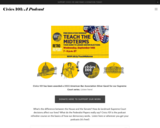
Engaging, teacher-created lesson plans on the Constitutional Convention, Freedom of Speech, 4th Amendment, Electoral College, Federalist and Federalism, more.
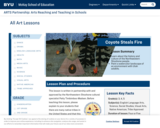
Learn about the history and culture of the Northwestern Shoshone people. Paint a watercolor landscape of an environment with Utah wildlife.
This lesson is written in partnership with and approved by the Northwestern Shoshone cultural specialist Patty Timbimboo-Madsen. Northwestern Band of Shoshone SealBefore teaching this lesson, please explain to your students that there are many native tribes in the United States and that this lesson specifically focuses on the northwestern band of the Shoshone Nation and does not represent other Native American groups. We hope that other native tribes will respect the northwestern band of the Shoshone Nation's choice to share this aspect of their culture.
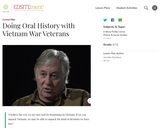
Oral History Interviews that bring students together with veterans help to foster empathy and make history come alive. This lessons offers a step-by-step guide to doing an oral history project with Vietnam War Veterans.
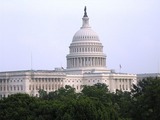
At OSPI, part of our mission is to prepare students for civic engagement throughout their lives. We believe our schools must engage and empower students, from an early age, with opportunities to participate in civil conversations, examples of effective civic engagement, and tools to find peaceful solutions to community problems.OSPI’s Social Studies and Social-Emotional Learning teams have put together resources for educators, families, and students to help with these difficult conversations.
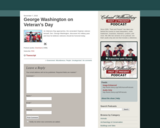
Since 2005, the "Past and Present" podcast from Colonial Williamsburg has taken you behind the scenes to meet interpreters, chefs, tradesmen, musicians, historians, curators, and more. We offer two versions of our podcast: one that's audio-only and one that includes a slideshow. In this episode, as Veterans Day approaches, the venerated Virginian veteran himself, Gen. George Washington, discusses his military past and how he believes veterans should be honored today.
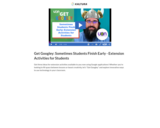
Get three ideas for extension activities available to you now using Google applications! Whether you’re looking to fill space between lessons or boost creativity, let’s “Get Googley” and explore innovative ways to use technology in your classroom.
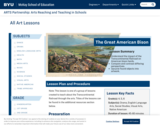
Lesson Summary:
-Understand the impact of the Transcontinental Railroad on American bison herds.
-Compare and contrast differing perspectives.
-Upcycle found objects into artwork.
Note: This lesson is one of a group of lessons created to teach about the Transcontinental Railroad through the arts.
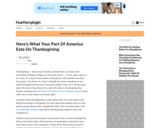
An article based on data and evidence that includes charts and information that can be analyzed statistically by students.
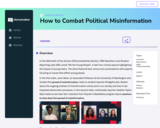
In the aftermath of the divisive 2020 presidential election, PBS NewsHour and Student Reporting Labs (SRL) aired "We the Young People", a half-hour virtual special highlighting the impact of young voters. The show featured teen voices and conversations with experts focusing on issues that affect young people.
In the first video, Jevin West, an Associate Professor at the University of Washington who studies the spread of misinformation, talks to student reporter Bridgette Adu-Wadier about the ongoing problem of misinformation online and in our society and how it has impacted democratic processes. In the second video, multimedia reporter Heather Taylor-Wynn talks to two teen fact-checkers from Poynter’s MediaWise program about solutions to slow down the spread of misinformation.
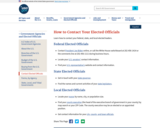
Find your congressmen
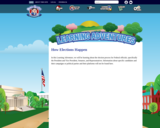
In this Learning Adventure, we will be learning about the election process for Federal officials, specifically the President and Vice President, Senators, and Representatives. Information about specific candidates and their campaigns or political parties and their platforms will not be found here.
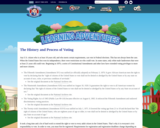
Learn about the election process for Federal officials. Information about specific candidates and their campaigns or political parties and their platforms will not be found here.